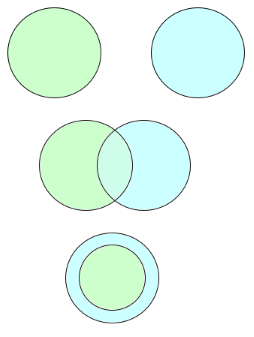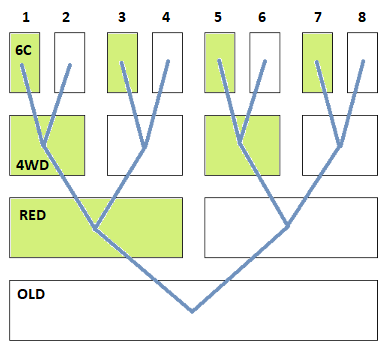The Ethnographic Explorer: Help Pages
Home > Contents > Configurational Analyses
|
Sets The process of sorting cases into groups is all about defining the membership of sets. In mathematics, a set is a collection of distinct objects or elements. Here we are calling these cases.The relationship between sets of cases is defined by the extent to which they have different, overlapping or identical members, Configurations are particular types of combinations of sets. Configurational analysis is a research approach that examines the relationships between sets to understand complex causal relationships in social phenomena. For example, what combination of specific kinds of events leads to a particular outcome of interest Qualitative Comparative Analysis (QCA) is one of a number of methods of configurational analysis. Supervised machine learning methods, known as Decision Tree classifiers, can also serve the same purpose (See EvalC3). The Ethnographic Explorer's three stage process is another approach. This is most suitable to contexts where there are relatively few cases e.g. 30, and where knowledge of these cases is more informal than formal, more qualitative than quantitative and perhaps a mix of the tacit and explicit. |
 |
|
Hierarchical Card Sorts as sets of configurations If a completed HCS is thought of as a tree structure, then each branch can be seen as a configuration. One which involves successively nested sets of cases, each with specific characteristics. In the example to the right, the left-most branch describes a configuration of different sub-sets of cars: being those that are old, then of these, those that are red, then of these, those that are 4WD, then of those, those that are 6 cyclinder.
In the Comparisons stage these configurations emerge into an overall ranked order, as the aggregate result of a series of binary comparison judgements between branches (where green = preferred, white = less preferred).
In the Contrasts stage, when using a scatter plot, we can see the relationship between cases associated with two different kinds of comparison judgements. For example, in a comparison of "time spent working with... " and "reported progress" we might see some cases ranked high on both. Where there is a relationship then examining the attributes of both of the configurations involved may tell us something about both the cause and consequences.
|
  |
| Triangulation and benchmarking Comparisons can be made with the results found by other tree based methods, such as Decision Tree classifiers. Quantitative differences that are the basis of distinctions between branches can be converted into more/less statements and these then generate an overall ranking of branches. |